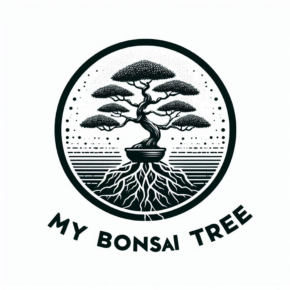When I first became interested in bonsai, I naturally began watching and reading a lot of internet content about it. At first, I was a little intimidated when I came across Japanese terms casually referenced in articles and videos. I did some research and eventually became familiar enough with these terms to use them in conversation. Here’s a quick, non-exhaustive overview of the important terms:
First, What Does “Bonsai” Mean?
The word bonsai (盆栽) is derived from two Japanese characters: “bon” (盆) meaning “tray” or “pot,” and “sai” (栽) meaning “planting” or “cultivation.” Thus, bonsai literally means “planted in a container.” However, the practice goes far beyond simple potted plants. Bonsai is the art of creating miniature, stylized versions of full-sized trees that appear as though they have been shaped by natural forces over time. Most practitioner’s goal is to create a harmonious and aesthetically pleasing balance between the tree and its environment, evoking a sense of beauty, age, and tranquility.
Now on to lesser-known terms:
Nebari (根張り)
Translation: Root flare or surface roots
Importance:
Nebari refers to the visible surface roots that spread from the base of the tree. In bonsai, the appearance of strong, well-balanced nebari is highly desirable as it gives the tree a sense of stability and age. It also adds to the visual aesthetics, grounding the tree and enhancing the illusion of an ancient tree growing in nature. The development of nebari can take years, making it a testament to a grower’s skill and patience.
Jin (神)
Translation: Deadwood
Importance:
Jin is a technique used to create deadwood on the branches or trunk of a bonsai. By stripping the bark and treating the wood, practitioners can mimic the appearance of weathered, ancient trees that have survived extreme conditions. Jin is an essential aspect of creating a sense of age and resilience in a bonsai, giving the impression that the tree has endured harsh natural forces over time.
Shari (舎利)
Translation: Deadwood on the trunk
Importance:
Similar to jin, shari involves the creation of deadwood but specifically on the trunk of the bonsai. This technique is used to represent the scars left by lightning strikes, disease, or old age. Shari contributes to the overall story the bonsai tells and helps convey the tree’s struggle for survival, enhancing its natural beauty.
Tachiagari (立ち上がり)
Translation: Lower trunk section
Importance:
Tachiagari refers to the lower part of the trunk, from the nebari up to the first branch. This part of the bonsai is crucial because it sets the foundation for the tree’s overall appearance. A well-formed tachiagari should exhibit tapering and movement, leading the viewer’s eye naturally upward through the rest of the tree. It is an essential element for creating a harmonious and aesthetically pleasing bonsai.
Yamadori (山採り)
Translation: Collected from the mountains (wild tree collection)
Importance:
Yamadori are trees that are collected from natural environments, such as mountains or forests. These trees often have unique and dramatic shapes due to their struggle to survive in harsh conditions. Yamadori bonsai are highly prized for their natural, rugged appearance, which can be difficult to replicate through traditional nursery-grown stock. The collection of yamadori is also steeped in ethical and legal considerations, as it requires proper permissions and responsible collection to avoid harming natural ecosystems.
Shohin (小品)
Translation: Small size
Importance:
Shohin refers to bonsai that are less than 20 cm (8 inches) tall. These tiny trees are not just miniature versions of regular bonsai but represent a distinct category that requires specialized techniques. Shohin bonsai are highly admired for their compact size and the level of detail that must be achieved in such a small form. While they may appear “simpler,” they actually demand a great deal of skill to create balance and maturity in such a limited space.
Chuhin (中品)
Translation: Medium-sized bonsai
Importance:
Chuhin bonsai range between 20 and 40 cm (8 to 16 inches) in height and serve as the middle ground between shohin and larger bonsai. Chuhin is a popular size for bonsai practitioners because it strikes a balance between manageability and detail. The tree is small enough to fit into smaller spaces yet large enough to showcase intricate shaping and styling techniques.
Omono (大物)
Translation: Large bonsai
Importance:
Omono refers to large bonsai, typically over 60 cm (24 inches) tall. These trees are often the centerpiece in bonsai exhibitions and are admired for their grandeur and detail. Cultivating omono bonsai requires significant effort, both in terms of shaping and maintenance. Due to their size, omono bonsai tend to demand more time, space, and resources, but the results can be breathtaking.
Moyogi (模様木)
Translation: Informal upright style
Importance:
Moyogi is one of the most common bonsai styles. Unlike the strict, formal upright style, moyogi allows for more natural curvature in the trunk, giving the tree a graceful and flowing appearance. This style is popular because it mimics the way trees often grow in nature, bending and twisting in response to their environment.
Why These Terms Matter
Understanding these terms is not just about learning a new vocabulary; it’s about connecting with the heart of the bonsai tradition. Each term reflects a specific technique, style, or aspect of the bonsai tree, contributing to the overall philosophy that bonsai embodies: patience, attention to detail, and harmony with nature. Mastery of these terms and the concepts behind them is essential for anyone who seeks to create bonsai not just as plants, but as living works of art that tell a story.
By familiarizing yourself with these essential terms, you can deepen your appreciation for the complexity and beauty of bonsai, whether you are a beginner or a seasoned practitioner.
